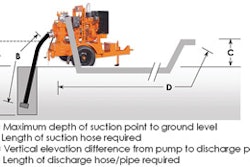You know the difference between a $50,000 salesperson and a $200,000 salesperson? You go broke with the first and get rich with the second!
At some point in time, if you are going to grow your contracting business beyond $2 million, you are going to need someone working on sales full time.
Now, maybe sales is your thing and you want to do that full time. Fantastic. It's almost always best when a business owner is committed to selling. But, if sales isn't your thing then you will definitely need to hire a salesperson. Either way, you are going to be faced with a critical decision: how should you pay your new salesperson? Draw (salary) plus commission? Bonuses for sales generated? Increased commission with increased sales volume? A higher commission for new customers? Straight salary?
All of these are commonly used approaches. Not one of them is likely to produce the profit results you seek.
If you let your salesperson have his way, he will want a draw plus commission. Most will ask for a pretty stout draw and a relatively modest commission based on revenue sold. Don't agree to that!
Draw-plus-commission lines the pockets of your salesperson regardless of whether he is making you any money. The purpose of draw-plus-commission is to drive sales volume. Don't fall into the trap of thinking sales volume is important.
So here's the single most-powerful trick I know for supercharging your bottom line: you need your salesperson to focus on profitable work. Let your competition sell the unprofitable work. That's work you don't want, and you certainly don't want your own salesperson bringing it to you.
How do you get your salesperson to chase profitable work? You align his pay to profit. Put in place a pay plan that rewards him for profitable work and punishes him for unprofitable work. Basically, make him a pseudo-partner. It is surprisingly easy to do and here's how:
- Base entire compensation on commissions on gross profit (a commission rate often in the 20% range).
- Guarantee a minimum income, whether his earned commissions surpass it or not.
- Keep the commission rate the same regardless of sales volume or profit generated.
- Replace him if he doesn't earn his guaranteed minimum income within a reasonable time period, say 18 months.
With this approach your salesperson will be highly motivated to ask for the highest price possible. He will not leave $100 on the table because with a 20% commission he would be leaving $20 behind. An example will drive the point home quite clearly.
Let's say your salesperson has estimated a job's direct costs will run $10,000. Let's compare how the two plans drive desired sales behavior.
The salesperson being compensated with the standard salary plus 2% of sales has little incentive to risk losing a sale by raising price. If he sold the job at cost, he would earn a $200 commission. If he sold the job for $15,000, he would earn a $300 commission. He only makes an extra $100 for substantially increasing the likelihood of losing the job.
He will not raise the price to $15,000 just to earn the extra $100. Of course, you lose money if he sells the job at $10,000, but he doesn't care. It's all about volume, right?
But using my recommended approach your salesperson earns nothing if he sells the job at $10,000. He earns $1,000 if he sells the job for $15,000, and he earns $2,000 if he sells it for $20,000. How motivated will he be to pursue the highest price possible? Very, very motivated.
Do to the potential windfall he can earn, he will become a master at qualifying customers. He won't spend time on price-sensitive customers, but he will aggressively pursue the customers who value your company's superior services and are willing to pay for them.
These are exactly the customers you want him to pursue because not only are they profitable, they tend to be more loyal and tend to be more willing to refer you to their friends, family, and professional associates.
Look at what you get when you are paying a 20% commission on gross profit: you pocket $4,000 for every $5,000 of gross profit your salesman generates. Sure, a great salesperson will make a killing with this type of pay plan, but you're going to make an even greater killing. You want your salesperson earning $200,000 because that means he's contributing $800,000 to your OH&P. Imagine having four such salesmen in your firm. How well-off would you be?
This type of pay plan will draw top salespeople to your company. Where else in the construction industry, or any industry, are they going to have a chance to make that kind of money?



















